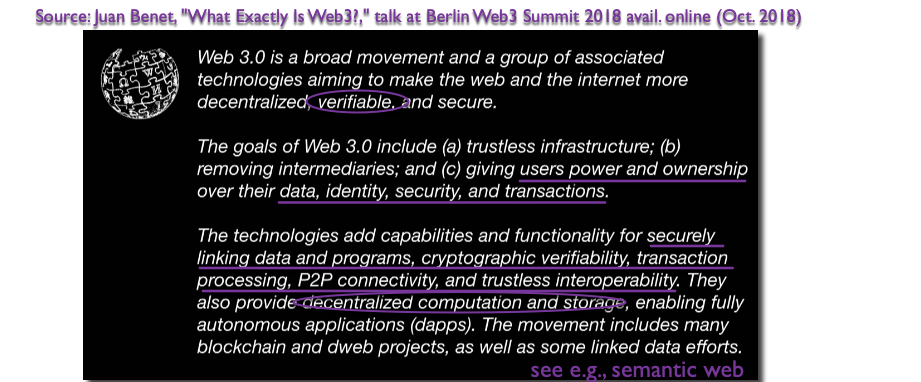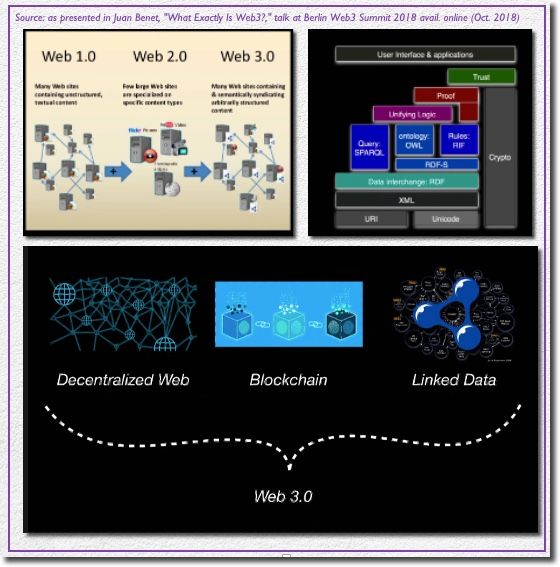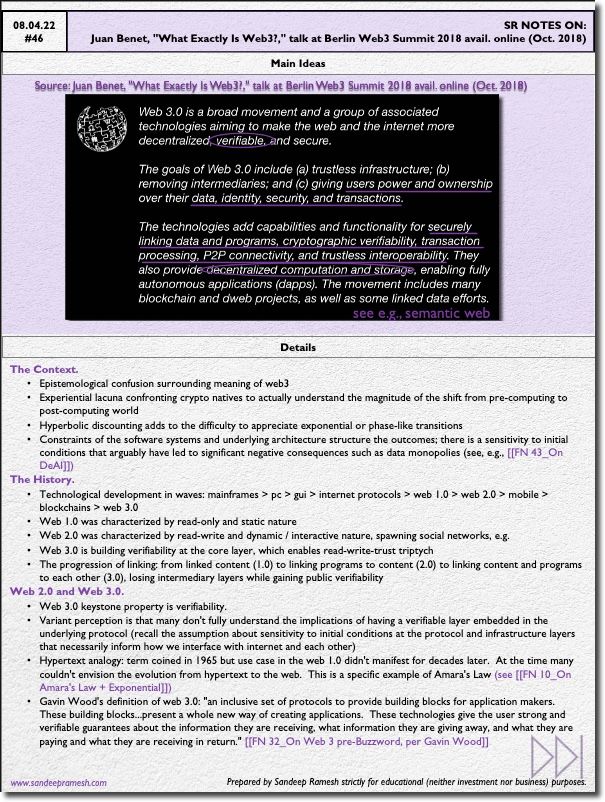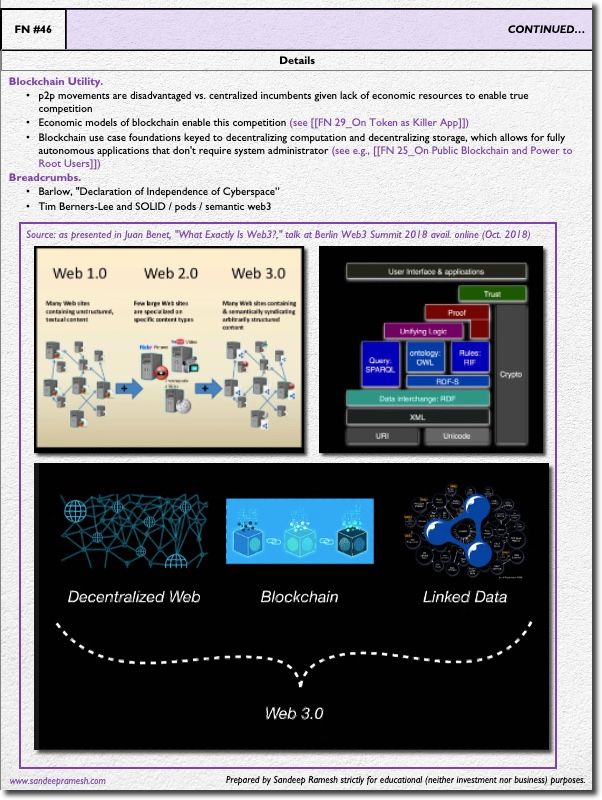Source: Juan Benet, "What Exactly Is Web3?," talk at Berlin Web3 Summit 2018 avail. online (Oct. 2018)
Disclaimer: these notes are modifications, extensions, interpretations, and paraphrases of the source material (audio/video).
An Image: Toward a Web3 Definition.

The Context.
- Epistemological confusion surrounding meaning of web3
- Experiential lacuna confronting crypto natives to actually understand the magnitude of the shift from pre-computing to post-computing world
- Hyperbolic discounting adds to the difficulty to appreciate exponential or phase-like transitions
- Constraints of the software systems and underlying architecture structure the outcomes; there is a sensitivity to initial conditions that arguably have led to significant negative consequences such as data monopolies (see e.g., Field Note #43)
The History.
- Technological development in waves: mainframes > pc > gui > internet protocols > web 1.0 > web 2.0 > mobile > blockchains > web 3.0
- Web 1.0 was characterized by read-only and static nature
- Web 2.0 was characterized by read-write and dynamic / interactive nature, spawning social networks, e.g.
- Web 3.0 is building verifiability at the core layer, which enables read-write-trust triptych
- The progression of linking: from linked content (1.0) to linking programs to content (2.0) to linking content and programs to each other (3.0), losing intermediary layers while gaining public verifiability
Web 2.0 and Web 3.0.
- Web 3.0 keystone property is verifiability
- Variant perception is that many don't fully understand the implications of having a verifiable layer embedded in the underlying protocol (recall the assumption about sensitivity to initial conditions at the protocol and infrastructure layers that necessarily inform how we interface with internet and each other)
- Hypertext analogy: term coined in 1965 but use case in the web 1.0 didn't manifest for decades later. At the time many couldn't envision the evolution from hypertext to the web. This is a specific example of Amara's Law (see Field Note #10)
- Gavin Wood's definition of web 3.0: "an inclusive set of protocols to provide building blocks for application makers. These building blocks...present a whole new way of creating applications. These technologies give the user strong and verifiable guarantees about the information they are receiving, what information they are giving away, and what they are paying and what they are receiving in return." (see Field Note #32)
Blockchain Utility.
- p2p movements are disadvantaged vs. centralized incumbents given lack of economic resources to enable true competition
- Economic models of blockchain enable this competition (see Field Note #29)
- Blockchain use case foundations keyed to decentralizing computation and decentralizing storage, which allows for fully autonomous applications that don't require system administrator (see e.g., Field Note #25)
Breadcrumbs.
- Barlow, "Declaration of Independence of Cyberspace” (link)
- Tim Berners-Lee and SOLID / pods / semantic web3

The Package.

